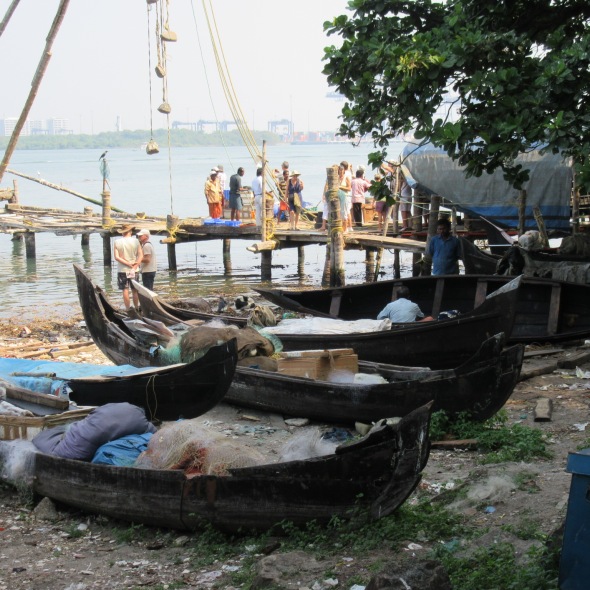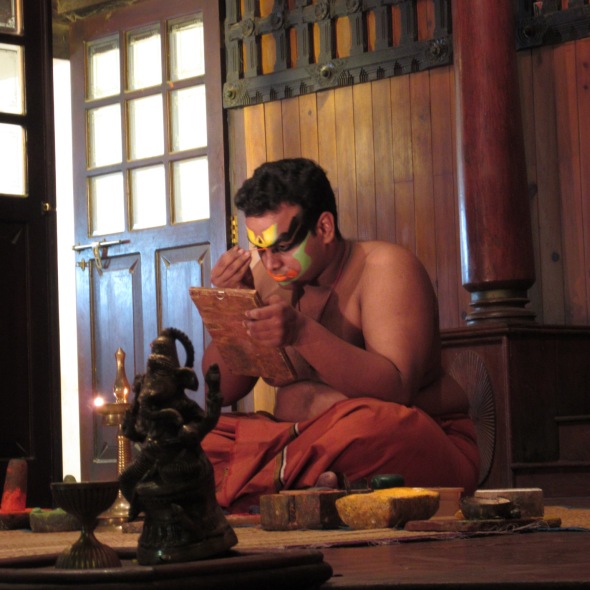I chose to do as the birds do and go south for winter to Kerala. Beaches, backwaters, greenery and so much more as I was to find out.

The beach at Fort Kochi looking towards Willingdon Island (the largest man-made island in India)
I started at Fort Kochi, a historic port town that still has the Dutch, Portuguese and British colonial influence present in its buildings and culture and a busy harbour, lined with seafood markets and cafes.

Mending fishing nets, Fort Kochi

One of the Chinese fishing nets at Fort Kochi.
I spent many hours meandering around, past churches and parade grounds, through market streets with tiled roofs, watching the rise and fall of the Chinese fishing nets, and eating some of the best food that I’ve had so far on my travels.

Rava (a form of semolina) cooked with onion seeds, curry leaves, ginger and sliced onion. Absolutely delicious with sliced banana to finish it off.
On the evening of my first day in Kochi, I went to the Kerala Kathakali Centre to see a performance of traditional Keralan theatre. Before the performance, the audience had an opportunity to watch the performers apply their make-up.

Kathakali performer applying his make-up.
The make-up is made from a paste of ground stone and coconut oil, and applied with small sticks. There are five colours used: red, yellow, white, blue and green. Each has a meaning, red for anger or danger is the one that I remember.
After the performer in the picture above had completed his make-up, he then lay down in front of a man armed with strips and threads of cotton, scissors, paper, and a pot of white paste. From the angle that I was sitting, I couldn’t see what was happening until he sat up some many minutes later.

Sculptured paper and rice paste add the finishing touches to the character. Pretty amazing, eh?
Once the performers had finished, we were treated to an explanation (with demonstration) of what Kathakali is. Katha means story, kali means play. A singer and drummer(s) accompany the performers to convey the story, as no words are spoken in the performance. The story is told through a complex series of hand mudras (there are 24 common mudras), stances and facial expressions (there are nine set expressions to convey heroism, comical, love etc.). Eyebrows, eyes, cheeks, jaw and jowels are manipulated to achieve fantastic results.
After the demonstration, the actors returned to tell a story, and I wish I could tell you what the story was about but I’d failed to get the information sheet that was handed out before the performance. That added a certain element of fun in my eyes as I tried to figure out just what was going on. I perceived that there was a prince who saved someone from a demon by stealing the demon’s food, and when the demon became enraged, the prince killed it. Well, that’s what I came up with anyway. To be honest, I didn’t need to know what was going on, I was enjoying the extravagent costumes and eye movements far too much.

The prince eating the demon’s food. I think,…

The prince. Doing something princely.